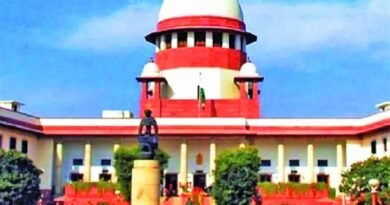PM gets vocal for wealth creators
It’s time to abandon the socialist mindset of the 1970s and take pride in wealth creation though the Govt must continue to improve conditions
It was heartening to hear Prime Minister Narendra Modi speak up in Parliament in defence of wealth creators. This must be as motivational in boosting the confidence of India Inc as was the PM’s catchphrase of being “Vocal for local” for domestic manufacturers. “The culture of abusing the private sector is not acceptable any longer,” Modi said in his reply on the motion of thanks to the President’s address.
This was indeed a bold rebuttal to the “andolan-jeevis” (professional protesters) who continue to criticise pro-corporate reforms and resist agri reforms, which even the US and Canada officially asked for through the WTO fora. The Opposition’s objections? That “this Government works only to benefit the Big Boys”. Let’s put it in perspective: It’s the Big Boys of India Inc, just like the Big Boys who comprise the Internet Giants of the US, who have had a multiplier effect in creating jobs, contributing towards the GDP and paying taxes.
Isn’t this the Modi we all voted for in 2014? As a contender, he promised transformation and more employment avenues for the aspirational youth. While Modi combined Hindu cultural nationalism with economic growth, he never built his campaign on a limited and sectarian ideology, but promised universal prosperity.
Flashback to 2013 when Chief Minister Modi hit the campaign trail to become the Prime Minister. What was the key differentiator between him and the incumbent Congress-led UPA? That Modi was an able administrator, a business-friendly CM whose Gujarat model sparked hopes of replicating a similar paradigm at the Centre; that Modi came unencumbered from the baggage of family, dynasty or corruption and that he vowed to shake off the decision-making inertia UPA2 had sunk to as it was steeped in charges of corruption and cronyism.
Cut to 2021. It’s time to abandon the socialist mindset of the 1970s and take pride in wealth creation. For the “bad capitalists”, the tax evaders and wilful defaulters of the UPA2 era who continued to ever-green their loans, the Government has put in place punitive measures as also succeeded in recovering Rs 1,05,773 crore of the total Rs 1,72,565 crore through the IBC route.
However, it is imperative that the Government continues to improve the “ease of doing business” (EoDB) for the “good capitalists”. Budgets 2020 and 2021 have, through financial and administrative reforms, shown the intent to walk the talk on eradicating tax terrorism by implementing faceless assessment and appeals, dispensing with retrospective taxation, decriminalising certain Sections under the Companies Act, improving the ease of filing returns and reducing from six years to three years the period when tax cases can be reopened.
Besides improving the EoDB parameters, it is equally important to lower the cost of doing business. This is achievable by not only keeping the cost of credit low but also by lowering electricity and land rates, and by minimalising compliance procedures.
As the PM said: “Wealth creators are most needed to redistribute wealth or how else will we give jobs?” India has only 10 crore labourers in the organised sector as against 40 crore in the unorganised sector where they don’t have access to any social safety net. The Government has stretched its limits of generating employment through schemes like PMEGP, MNREGA, DDU-GKY and the PM-Mudra Yojna.
Budget 2021 is infrastructure-led rather than consumption stimulating as “it is estimated that of the Government spend of Rs 1 on infrastructure, Rs 2.5 are generated in real economy”. To fund expenditure instead of raising taxes, the Centre will rely on off-revenue sources like asset monetisation and setting a realistic target for disinvestment of Rs 1,75,000 crore. Therefore, it needs to incentivise the private sector to bid for loss-making Public Sector Units and encourage its participation in infrastructure, for which the Government has raised capital expenditure outlays by 34.5 per cent.
As global financial markets are flush with liquidity, or “helicopter money”, and interest rates are at their lowest, money looks for a place for profitable and risk-free deployment. So this is the right time to focus on attracting long-term debt capital by forming a Development Finance Institution, much needed for long gestation projects like infrastructure.
Besides, private growth multipliers will come from increased allocations towards Productivity-Linked Incentive (PLI) schemes in sunrise sectors, while allocations towards Fintech Hubs and Textile Parks will bolster job creation. But the key lies in speedy implementation and ensuring that the funds are released and fully utilised in time.
Lastly, with formal jobs shrinking, net new job growth has been created by startups. India needs 10 million jobs annually, and current estimates project that it will have 60,000 startups and 100 unicorns by 2025. The exponential growth of startups can be seen by how India scaled up on substituting imports with manufacturing: From ventilators, PPE kits, masks, sanitisers and testing kits, to becoming the vaccine supplier to the world.
With multiple reasons for economic optimism, we must get the “Vocal for local” industry to thrive. And when we do bag windfall profits, or are jolted by shocks, the Government must continue with its supportive policy and monetary recalibrations as it has been doing through 2020 by introducing mini-budgets.
(The writer is an author, columnist and Chairperson, NCFIL, at Niti Aayog. The views expressed are personal).
Source: The Pioneer




